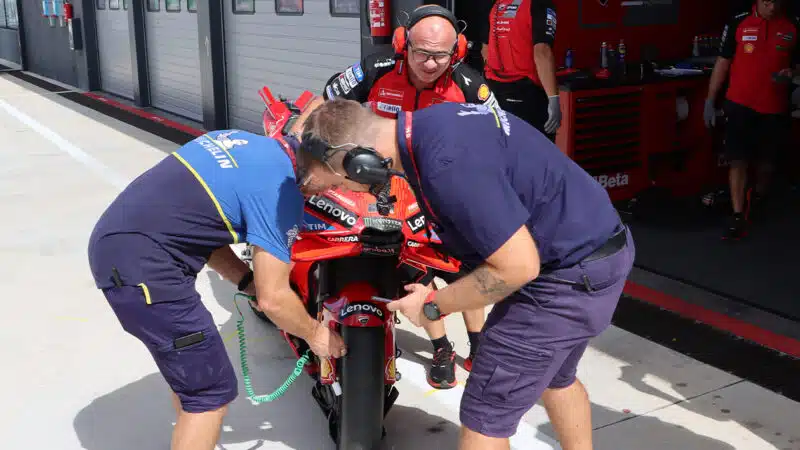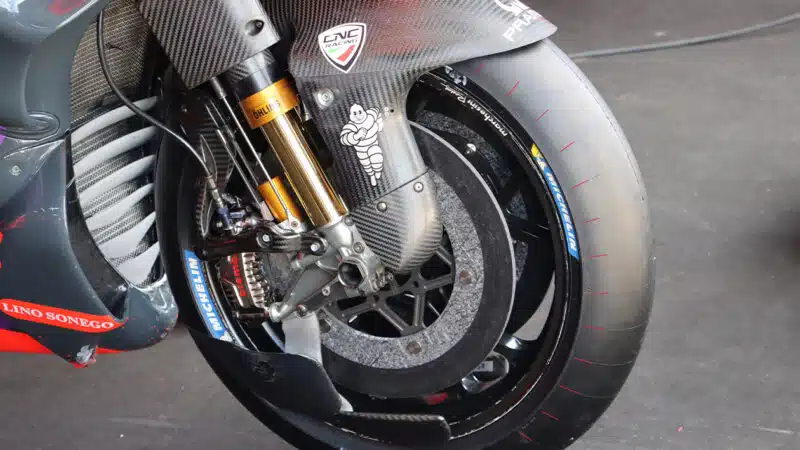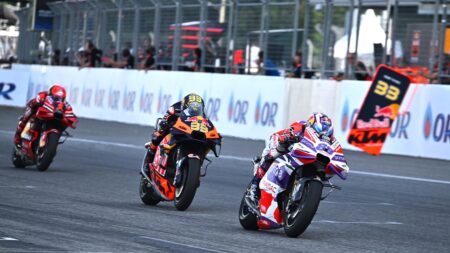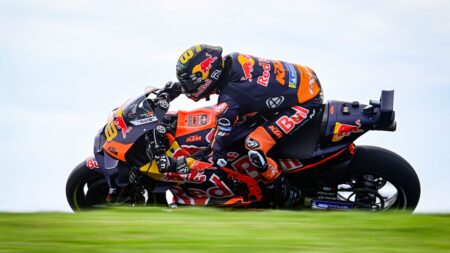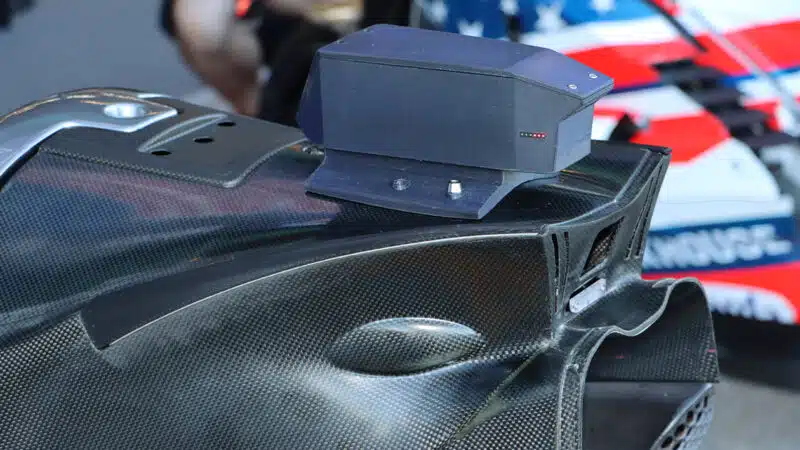“I love the tyre,” he said. “Because it’s something I really need, because I use a lot of brake entering corners, which feels super-good with this tyre. It does make the bike heavier to change direction. But I like the grip a lot and the way you can push on the tyre. Also, I think that when we are behind someone we may feel the tyre-pressure problem less.
“When I tried the tyre I was braking like a devil. My problem with the current tyre is that I can’t brake like I want, on angle, because the tyre collapses.
“I chose two slow corners [Turns 2 and 4] where I could take risks and crash and not have any issues. At those corners I forced the bike a lot to have movement from the tyre, or locking, or losing the front, but I didn’t have any of that. It’s incredible.
“I’ve spoken many times with Valentino Rossi about the Bridgestone front [MotoGP’s spec tyre from 2009 to 2015 and the reference in front-tyre performance] and this feeling seems to be the same they had with the Bridgestone.”
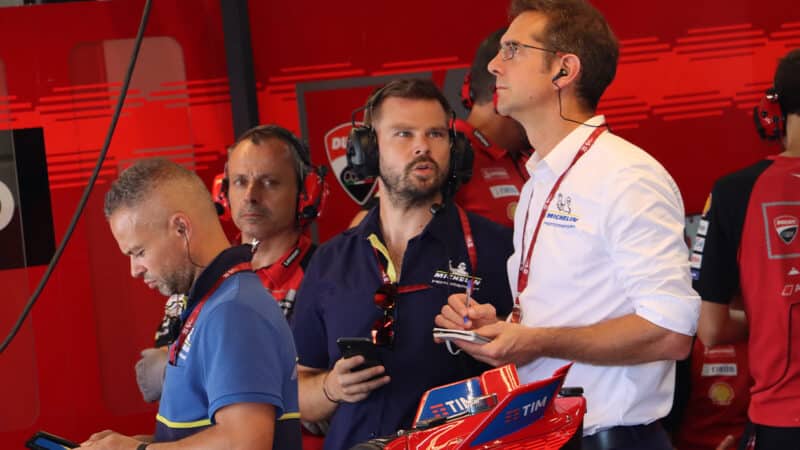
There were more Michelin engineers in team garages than ever before during Monday’s front-tyre test
Oxley
Sunday’s Misano winner Marc Márquez was more concerned about the tyre’s reduced agility.
“It’s a big change,” he said. “It was super-strange during the first laps, then with more laps I built confidence. The stability is super-good and the braking stability is better. But they need to work on agility, especially in changes of direction, because again the bikes become heavier [to turn], because with the aero they’ve become heavier and heavier and heavier.”

